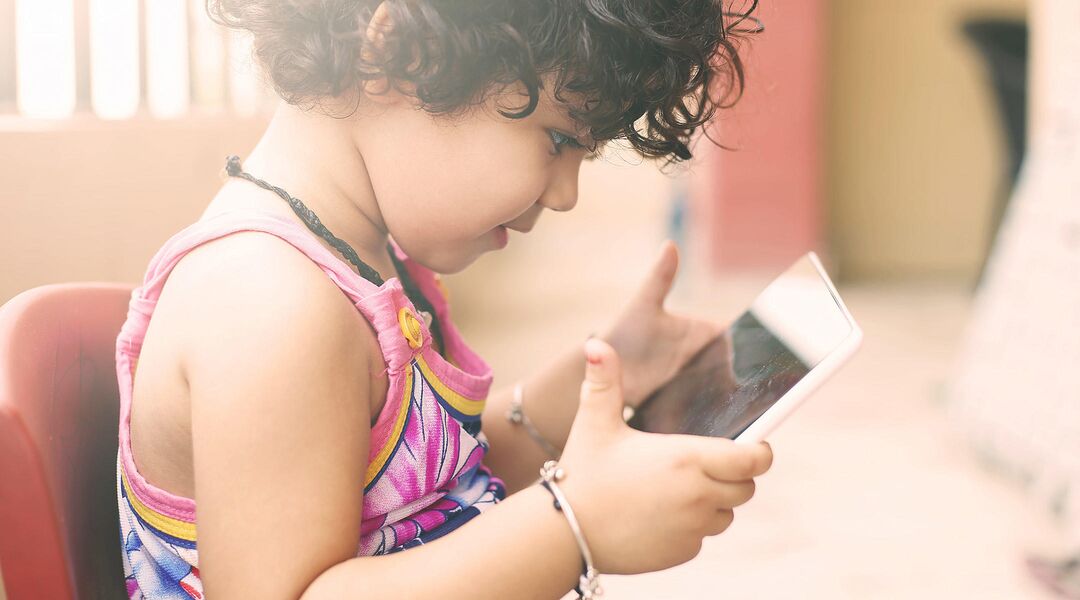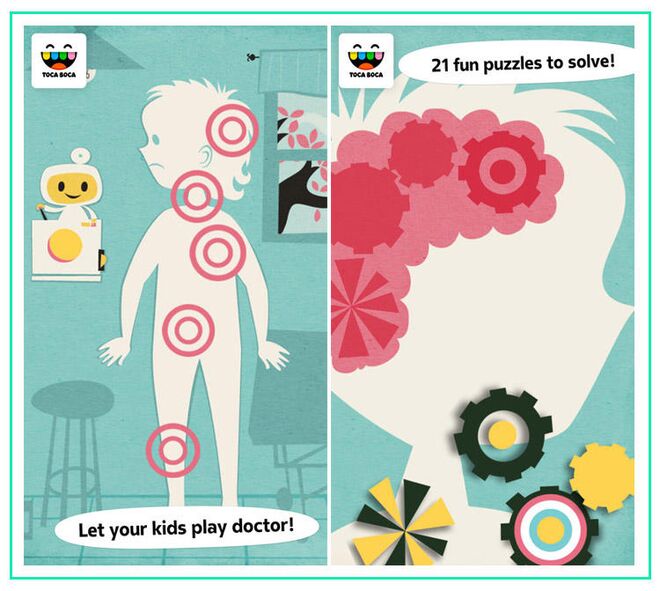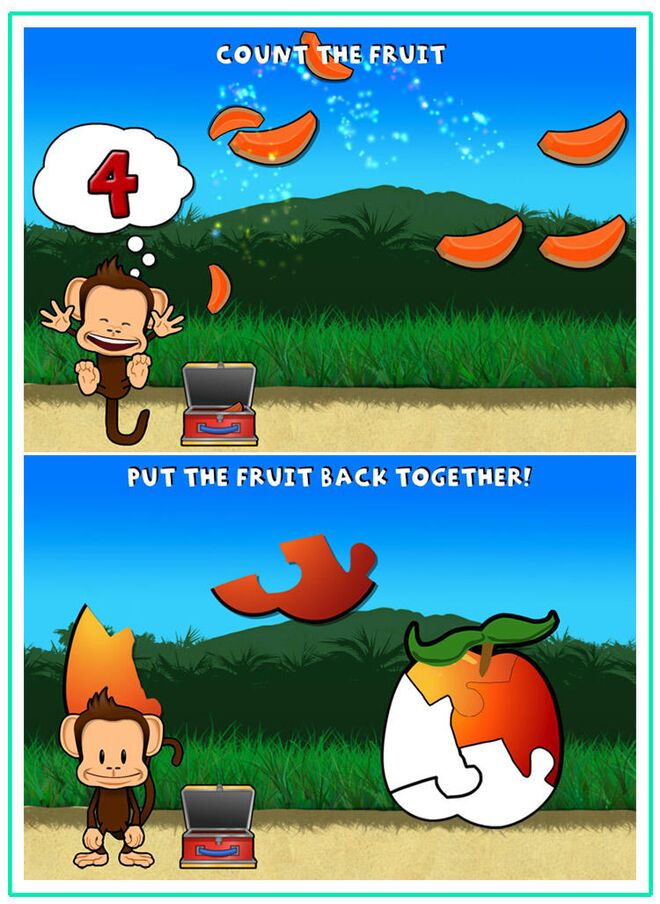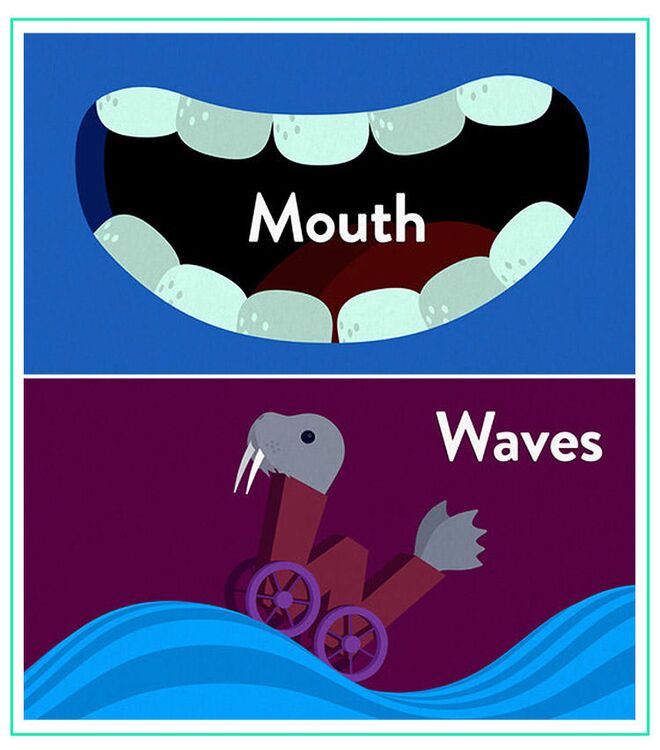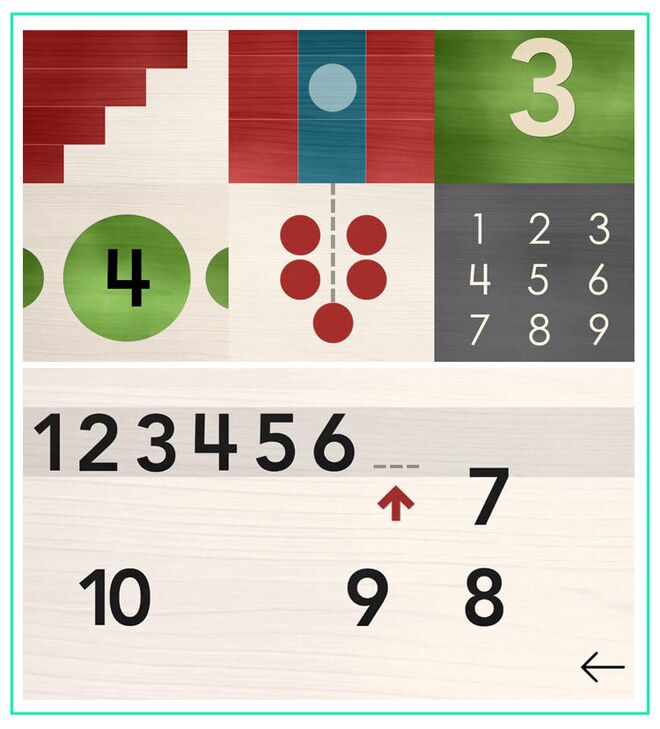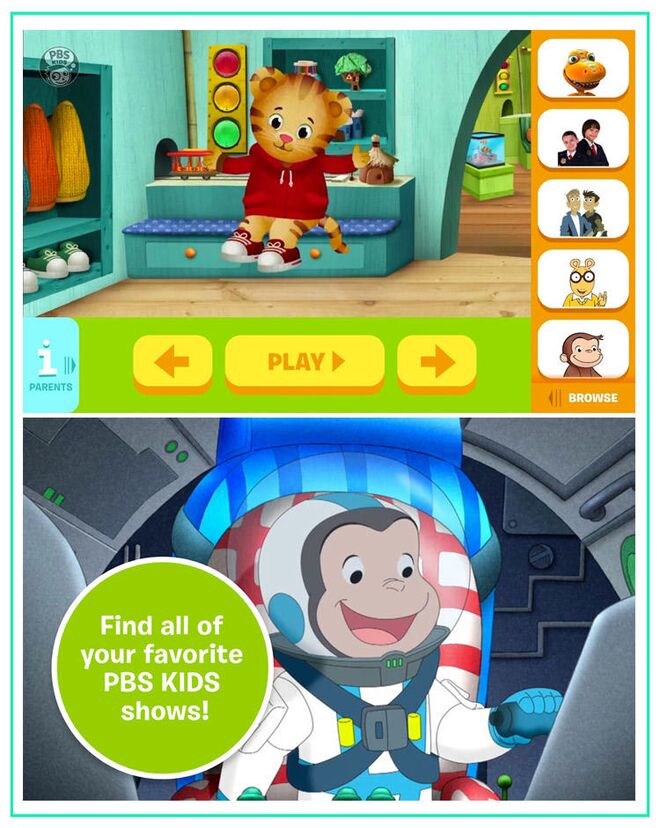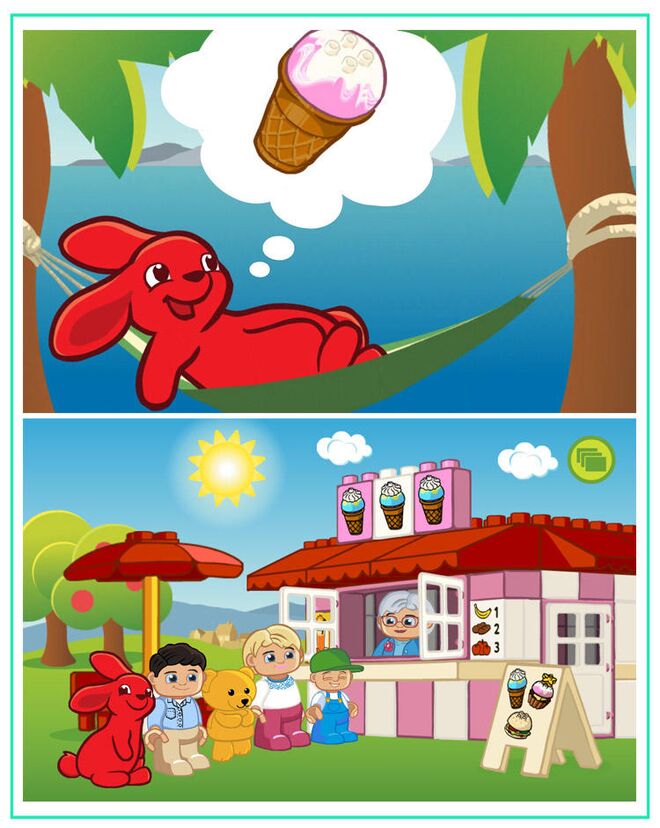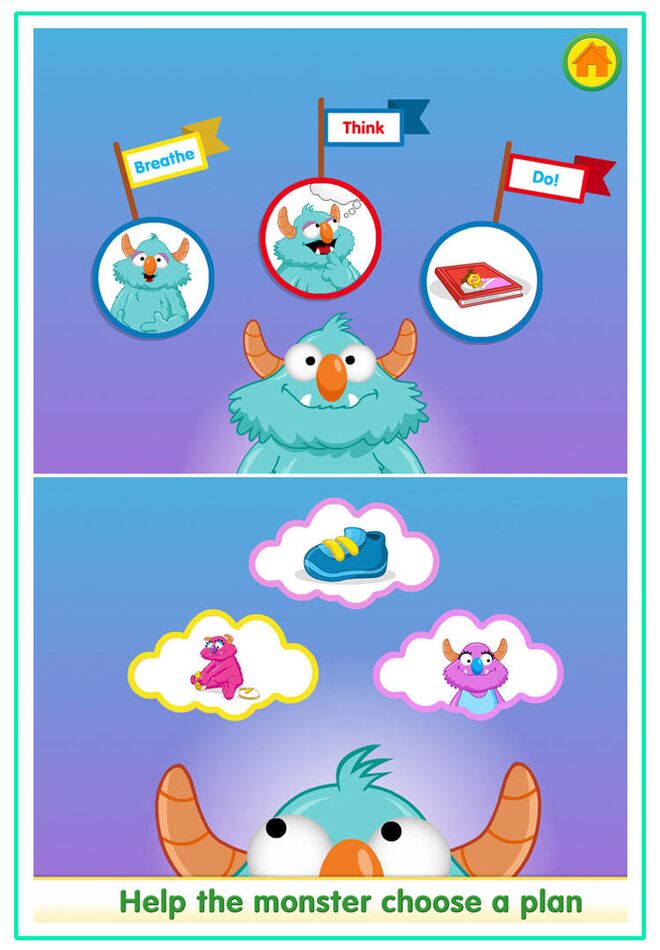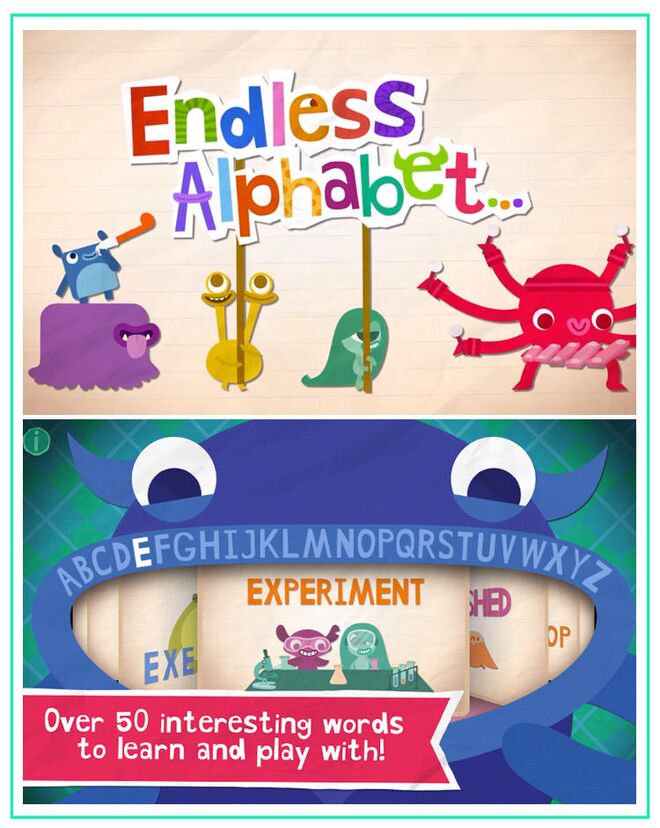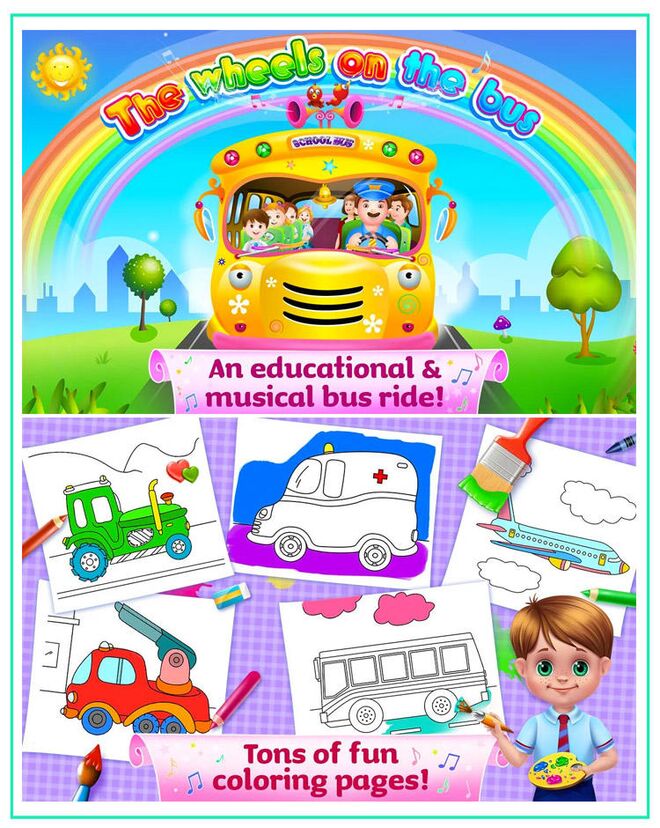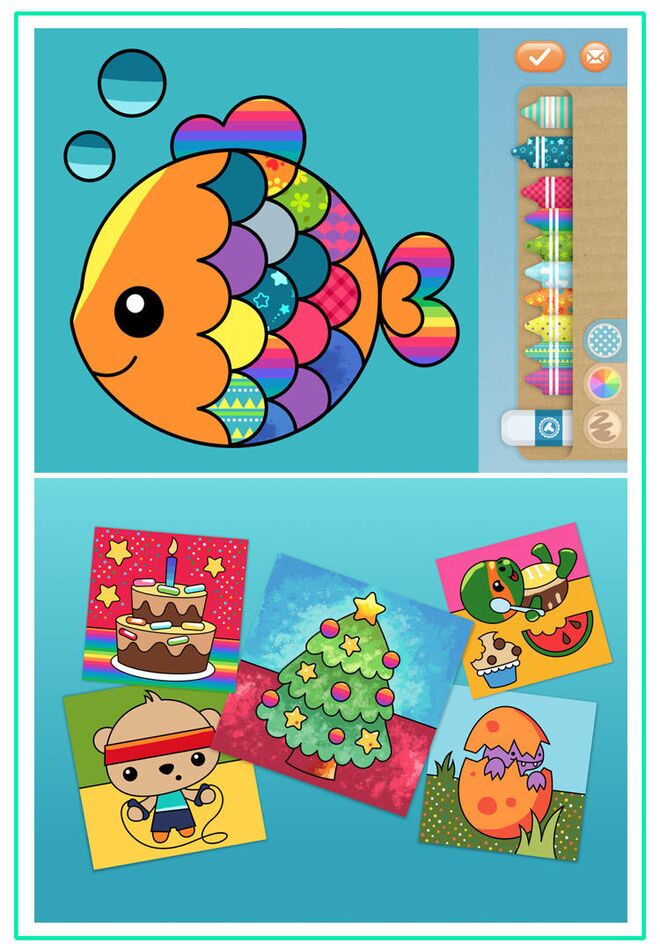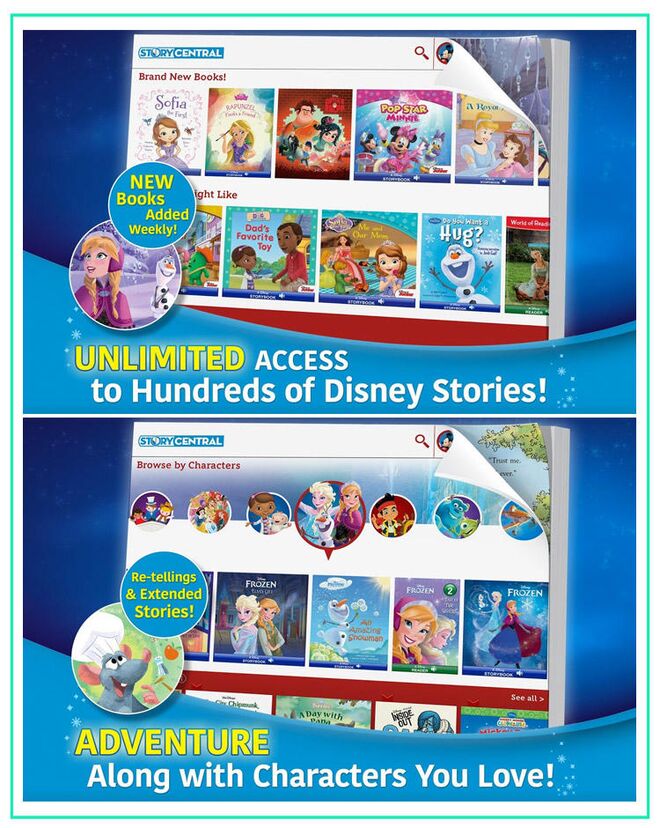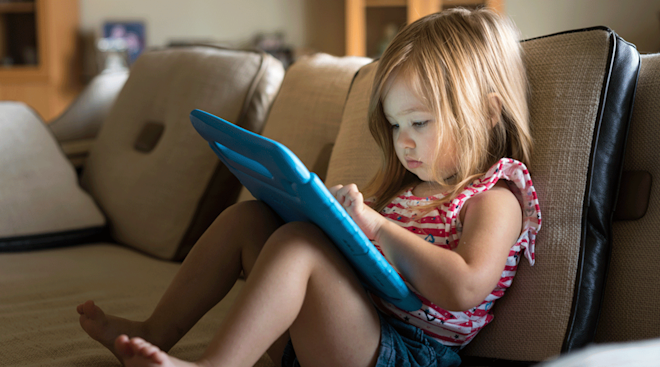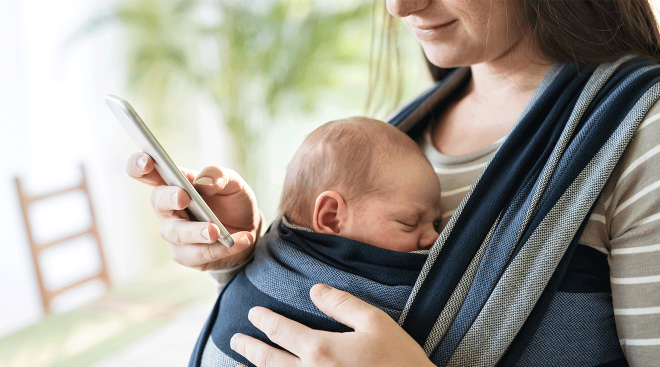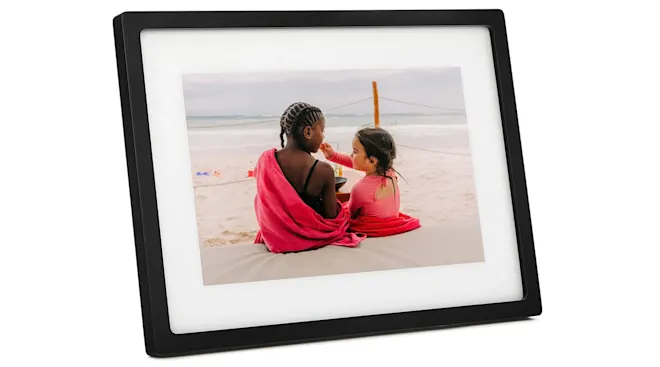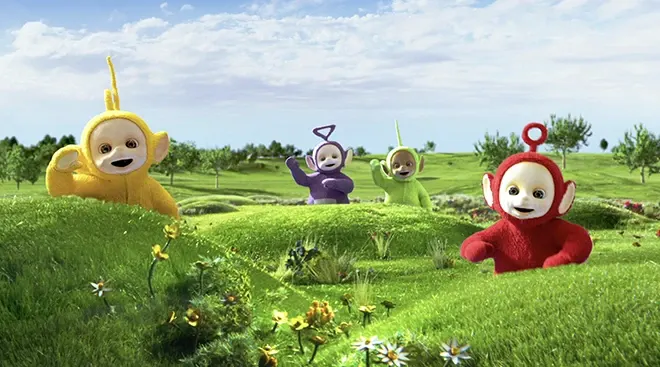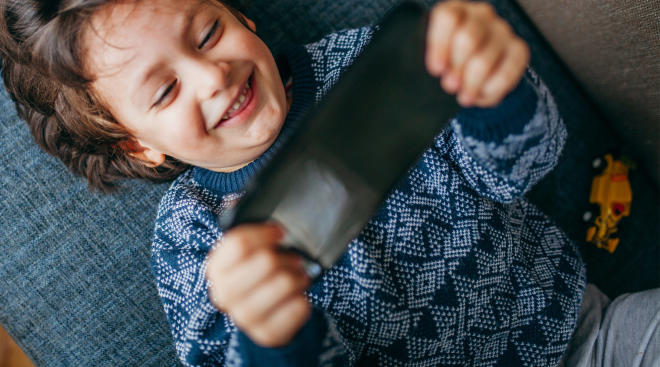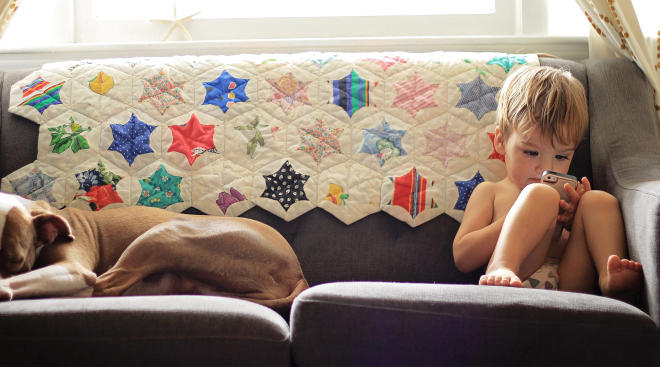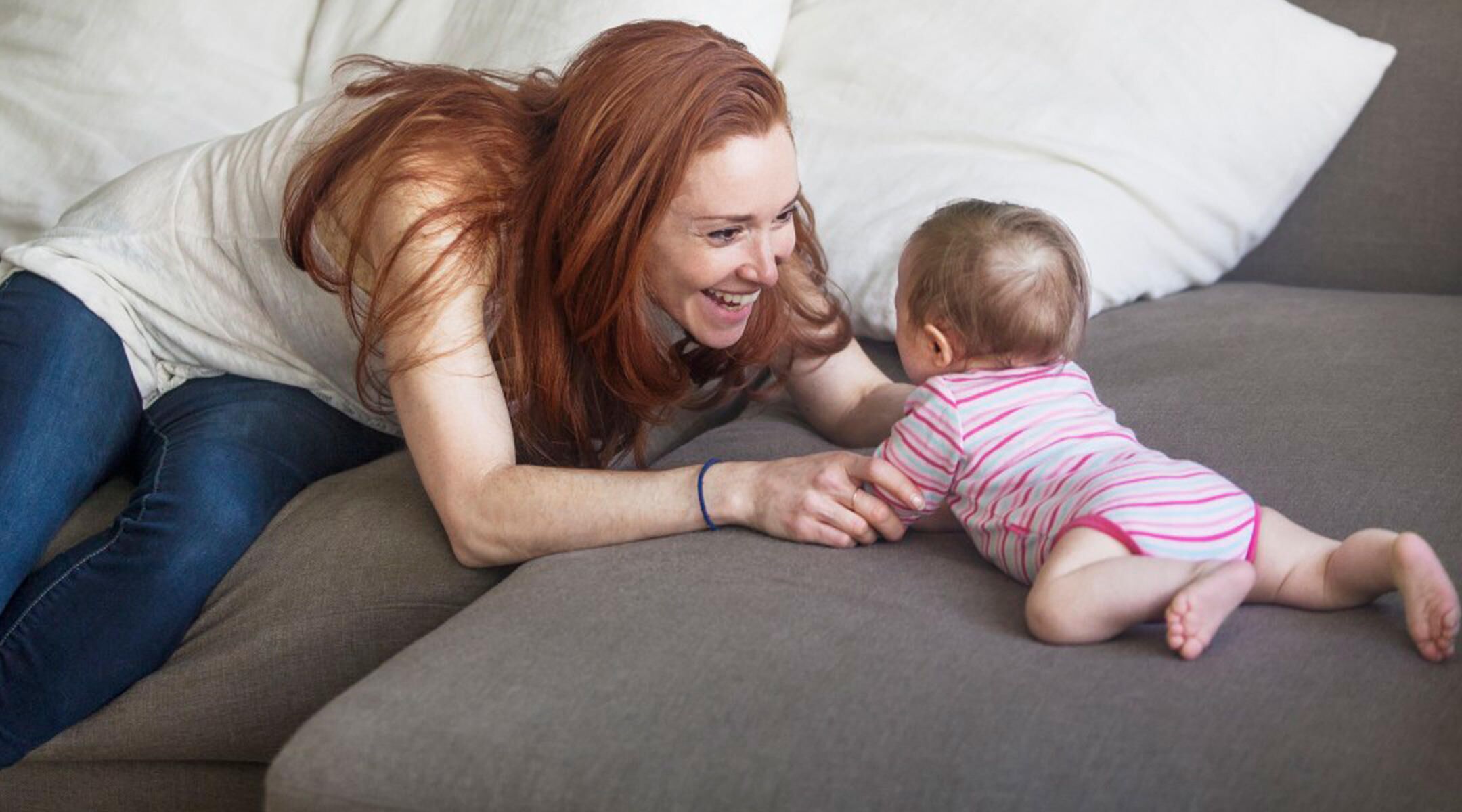19 Best Educational Toddler Apps
Toddler apps can be a beautiful thing for a parent. Just when you think a situation with your child is about to go south—say, waiting in the endless grocery store line—you whip out your digital device and poof! Instant entertainment. But how do you go about finding toddler apps that appeal to your little one and are actually educational? And what constitutes quality digital content for a toddler in the first place? Experts say there are about 120,000 toddler apps out there (and counting!) made especially for preschool-age children—a seemingly impossible number to sort through. Which is why we’re going to help steer you in the right direction. Learn everything you need to know about toddler apps, including what makes for quality content and whether there’s such a thing as too much screen time.
When it comes to comes to giving your toddler apps to play with, we know you’re worried about overdoing screen time. After all, the American Academy of Pediatrics (AAP) announced just last year that children between the ages of 2 and 5 should be exposed to only one hour of high-quality media per day. And yet, in this digital day and age, it may seem impossible to keep kids away from media. That’s okay—to an extent. What’s important is making sure the toddler apps they’re engaging with consist of quality digital content, the kind that actually provides benefits for your child.
“I think there’s something to be said for developing technological skills and getting a familiarity and a comfort level with digital media at a young age, because this is the way life is now,” says Chrissy Elgersma, apps editor at Common Sense Media, a nonprofit that advocates for safe media for kids. “I think most parents have a story about their toddler swiping the TV screen, because they have this innate understanding. I also think that, once they’re developmentally ready, building that comfort level and having kids create things with digital media gives them a sense of power—they’re not just consuming media, they also get a sense that they’re creators too.”
Peter Gray, PhD, a research professor in psychology at Boston University and the author of Free to Learn, agrees. “If the child is interacting with the content and choosing what to play or what to watch on a digital device, she can’t help but learn,” he says. “You’re always learning when you’re actively involved in something. And through toddler apps, kids are learning one of life’s most important lessons: figuring out what interests them.”
But some toddler apps offer more learning opportunities than others. So how can you tell which apps count as quality digital content—the kind that both educates and entertains? Consider these guidelines from Kathy Hirsh-Pasek, a faculty fellow in psychology at Temple University and president of the International Congress on Infant studies:
1. Is it active? “When we say ‘active,’ we mean ‘minds-on,’” Hirsh-Pasek says. Toddler apps that just ask kids to swipe their finger don’t count as active.
2. Is it engaging? “Does it capture the child’s interest in a way that doesn’t involve a lot of distractions?” she asks. “With a lot of the games out there, you’ll be looking at something and then you get a pop-up, or it tells you to go somewhere else. That’s the kind of thing that isn’t good for you.”
3. Is it meaningful? “Take a game like like a Minecraft, for example. You’re doing meaningful stuff if you can play it with others,” Hirsh-Pasek says. “Many of the toddler apps out there are silly, like a dog asking, ‘Where is the triangle?’ over and over, and when you find it, there’s this disembodied clapping on the other end.” Her point? Without the feeling of interaction, the game loses power.
4. Is it socially interactive? “While this criteria isn’t necessary, it’s a plus! Especially in a world where we have so many people who are not socially interactive,” she says.
And one more bonus point: Do your toddler apps have a well-established learning goal? If it encourages interest in STEM (science, technology, engineering and math), let’s say, or literacy, then it has the right to call itself an educational app, she explains.
The main reason behind the AAP’s one-hour screen-time limit is so that your devices don’t take away from the social interactions that are so critical for toddler development. But there’s no magic to the one-hour limit per se. As the experts we spoke with suggest, use it as a guideline to determine what’s best for you, your child and your family. And try not to beat yourself up every time you hand your toddler apps to play with on the iPad or smartphone. “Parents tend to feel really guilty about screen time. But if you’re doing it in a mindful way with quality content, and it’s in balance with other activities, then I think we can let ourselves off the hook a little bit,” Elgersma says.
Making a family media plan can be helpful. It can either outline the amount of time you allow your kids to play with toddler apps on their digital devices (for example: one hour a day) , or it can note which hours of the day those devices are off-limits (e.g., any time after 6 p.m.) or which areas of the house are screen-free zones.
With school-aged children, it can be useful to talk with your family about how digital devices might be interfering with the way you enjoy time together, Gray says. But with toddlers, you may have to handle the situation differently. If your toddler refuses to let go of the tablet or phone, tell her it’s time for the tablet to ‘go to sleep.’ It’s age-appropriate while also conveying that the tablet is off-limits now,” Elgersma says. “That way, hopefully, you can get the tablet back without a tantrum.” But it goes both ways! Parents should also be aware of the degree to which they’re ignoring the kids because they’re on their iPhones all the time. A 2014 study conducted by the Boston Medical Center found that about 70 percent of parents are on their phones while out with their families at restaurants. A followup study by AVG technology revealed that 54 percent of the 6,000 kids polled think their parents are glued to their devices, and another 32 percent feel “unimportant” when their caregivers are on the phone.
Once you’ve established your family media rules, it’s time to find the best digital content for your kids. Not sure where to start? Here are our picks for the best toddler apps overall, including the best apps for 2-year-olds and 3-year-olds, the best free apps, the best educational apps for toddlers and more. As you’re browsing, consider what you’d like your child to learn in front of the screen, and what his interests are. Then go ahead—click, download and swipe away (mindfully, of course)!
The app: Toca Boca Doctor
For ages: 2+
Why we like it: This toddler app is whimsically illustrated and teaches kids about the human body via mini-games. (In fact, Hirsh-Pasek loves the company’s entire app series.)
Price: $3
Download on: Apple
Find at: itunes.apple.com
The app: Monkey Preschool Lunchbox
For ages: 2 to 5
Why we like it: Move over, Curious George! With the help of the game’s adorable monkey, Milo, toddlers can learn about colors, letters, counting and matching.
Price: $2
Download on: Apple, Android
Find at: Monkeypreschool.com
The app: Disney Junior Appisodes
For ages: 2+
Why we like it: This one comes mom-approved! “My daughter loves the character-inspired educational games, the coloring and the videos,” one Bumpie tells us. (You can watch old episodes and stream lives ones on the app.) “I feel comfortable letting her go wild with it.”
Price: Free
Download on: Apple, Android
Find at: forgrownups.disneyjunior.com/appisodes
The app: Metamorphabet
For ages: 6-8, though our psychologists say 3 would be a great start.
Why we like it: This toddler app teaches you the alphabet with letters that gorgeously transform as you guess which words begin with them. (No wonder it’s an Apple Design Award Winner.)
Price: $4
Download on: Apple, Android, Mac, PC
Find at: metamorphabet.com
The app: Bramble Berry Tales: Sasquatch
For ages: 2+
Why we like it: Join Thomas and Lily as they meet the Pacific Northwest’s big, fuzzy, mythical Sasquatch in this stunningly and imaginatively illustrated interactive storybook. The characters react to a child’s touch, coming to life on the (digital) page, and help teach kids one of life’s most important lessons: Never judge a book by its cover.
Price: $3
Download on: Apple, Android
Find at: Play.google.com
The app: Intro to Math, by Montessorium
For ages: 2+
Why we like it: Looking to sneak in a few early math skills? This app will help your toddler identify, write and understand the numbers 0 through 9 with interactive and colorful games.
Price: $5
Download on: Apple
Find at: itunes.apple.com
The app: PBS Kids
For ages: 2+
Why we like it: The app features games and puzzles with all of your child’s favorite characters on PBS’s kid-friendly programs (including Arthur, Sesame Street and WordGirl), plus weekly educational videos.
Price: Free
Download on: Apple, Android, Kindle
Find at: pbskids.org/apps
The app: LEGO DUPLO Ice Cream
For ages: 3+
Why we like it: The true purpose of this task-based toddler app? Teaching kids the importance of support through friendship (like co-collecting bales of hay to help Rabbit). And the reward? A big, colorful, three-scoop ice cream cone party for all the characters, which any kid can get behind.
Price: Free
Download on: Apple, Android
Find at: Lego.com
The app: Breathe, Think, Do With Sesame
For ages: 2+
Why we like it: This Sesame Street-themed toddler app is great for teaching kids how to deal with tricky situations, especially social ones. (Which is why psychologists love it.) As a fun bonus, you can personalize the congratulatory messages ((in both English and Spanish) that kids hear while playing.
Price: Free
Download on: Apple, Android, Kindle
Find at: iTunes.apple.com
The app: Endless ABC’s
For ages: 2+
Why we like it: The Endless monsters are the true stars of this beloved app, leading fun (and funny!) little puzzles to teach kids each letter of the alphabet.
Price: $9
Download on: Apple, Android, Kindle, Windows
Find at: Originatorkids.com
The app: Tozzle—Toddler’s Favorite Puzzle
For ages: 2+
Why we like it: A cool app for puzzle lovers! With its more than 40 puzzles, children will learn how to problem-solve, uncover missing numbers and sound out new words as each puzzle comes together. And there are animals—always appreciated.
Price: $3
Download on: Apple
Find at: itunes.apple.com
The app: Dr. Panda’s Restaurant 2
For ages: 5+, but can totally be handled by a toddler with an adult.
Why we like it: This educational app for toddlers lets kids take charge of Dr. Panda’s restaurant, giving them the chance to choose which dishes they want to prepare and how they’d like to cook it. They can then feed their creations to the customers and gauge their reactions—it’ll be different every time. “My son used it originally with his speech therapist, and he loved it. Now I use it all the time in the car on a long ride,” one Bumpie says. “It’s taught him so much about cooking and how foods can make you react (i.e., pepper makes you sneeze!). Super interactive and fun.” (Other games in the series let you ride a train, build a car or go to space.)
Price: $3
Download on: Apple, Android
Find at: itunes.apple.com
The app: Mickey Mouse Playhouse Color & Play
For ages: 2+
Why we like it: In this toddler app, the beloved real-life coloring book transforms into a 3D experience. There are three seasons of themes to explore and an array of options for coloring and decorating—paint, markers, stickers, patterns, you name it!
Price: $2
Download on: Apple, Kindle
Find at: apple.itunes.com
The app: The Wheels on the Bus
For ages: 2+
Why we like it: Coloring is just the beginning. The activity center also includes educational games and sing-alongs (so your little Kelly Clarkson can belt it out at home).
Price: Free
Download on: Apple, Android
Find at: play.google.com
The app: Toonia Colorbooks
For ages: 2+
Why we like it: This coloring app for toddlers boasts more than 160 coloring pages and more than 100 colors to color with. There’s also a multi-touch option, allowing your toddler to color—and interact—with siblings, friends or you.
Price: Free
Download on: Apple
Find at: itunes.apple.com
The app: Moo, Baa, La La La!
For ages: 2+
Why we like it: Sandra Boynton’s classic board book, complete with hilarious animal noises, comes alive and interacts with your child. (One reviewer wrote that when her child read the hardcover version, he couldn’t understand why it wouldn’t speak to him.)
Price: $4
Download on: Apple, Android, Kindle
Find at: itunes.apple.com
The app: PopOut! The Tale of Peter Rabbit
For ages: 6-8, but younger when read with an adult.
Why we like it: Parents rave about this app because it puts an exciting spin on an old classic with interactive pop-ups. No longer is your early reader just following along— she’s helping the story and illustrations come to life—and learning about her senses along the way.
Price: $4
Download on: Apple, Android, Kindle
Find at: Amazon.com
The app: Disney Story Central
For ages: 2+
Why we like it: One of our Bumpie moms says, “It has easy-reader e-books for beginners, and lots of options as they grow.The app comes with four free books to start, but if you want more, you can find codes for free books online—and they do give away books around the holidays! So it’s not hard to create a full digital library.”
Price: Free
Download on: Apple
Find at: itunes.apple.com
The app: Rounds: Parker Penguin
For ages: 6, but can definitely skew younger when read with an adult.
Why we like it: Parker Penguin is the second book in Rounds’ witty non-fiction series chronicling the life cycle of an animal. The book’s frosty setting is backed by a whimsical, wistful score that’s worthy of a movie (probably because it was composed by a British Academy of Film and Television Arts Award-winning composer).
Price: $5
Download on: Apple
Find at: itunes.apple.com
Published July 2017
Navigate forward to interact with the calendar and select a date. Press the question mark key to get the keyboard shortcuts for changing dates.
































